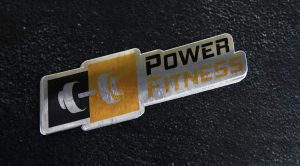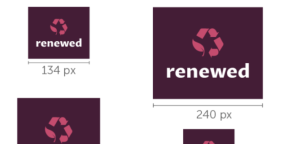Are you considering a logo redesign for your business? Your logo is the face of your brand and plays a crucial role in creating a memorable and recognizable image. A well-designed logo can help you stand out from the competition and establish a strong brand identity. On the other hand, an outdated or poorly designed logo can harm your brand image and make it difficult for customers to connect with your business.
In today’s fast-paced world, it’s important to keep up with the latest trends and stay relevant. A logo redesign can help you achieve this by giving your brand a fresh new look that resonates with your target audience. However, redesigning your logo is not something to be taken lightly. It requires careful planning and consideration to ensure that the new design accurately reflects your brand values and messaging. In this article, we will explore the benefits of logo redesign, the key factors to consider when redesigning your logo, and some examples of successful logo redesigns.
The Need for Logo Redesign
Your logo is the face of your brand. It’s the first thing people see and associate with your company. As your business grows and evolves, your logo should reflect those changes. Here are some reasons why you may need to consider a logo redesign:
Outdated Design
If your logo looks like it’s stuck in the past, it’s time for a change. Outdated logos can make your brand look unprofessional and out of touch. A fresh, modern design can give your brand a new lease on life and attract a younger audience.
Company Expansion
As your business expands, your logo should reflect that growth. If you’ve added new products or services, opened new locations, or expanded your team, your logo should evolve to reflect those changes. A redesign can help communicate your company’s new focus and direction.
Rebranding
If your company has undergone a major shift in focus or values, a logo redesign can help communicate that change. Maybe you’ve changed your company name or merged with another brand. A new logo can help signal to customers that you’re a different company now.
Poor Brand Recognition
If people aren’t recognizing your brand, your logo may be to blame. A confusing or forgettable logo can hurt your brand recognition. A redesign can help make your brand more memorable and easier to recognize.
In summary, a logo redesign can help keep your brand fresh, communicate growth and change, and improve brand recognition. If your logo is outdated, doesn’t reflect your company’s growth, values, or products, or is hurting your brand recognition, it’s time for a change.
Understanding Your Brand
Your brand is more than just a logo. It’s the personality and identity of your company. It’s what sets you apart from your competitors and what makes you memorable to your customers. Before you dive into a logo redesign, it’s important to understand your brand and what it represents.
One way to understand your brand is to define your brand values. What does your company stand for? What are your core beliefs and principles? Your brand values should be consistent with your company’s mission and vision. They should reflect the personality of your company and resonate with your target audience.
Another important aspect of your brand is your brand voice. How do you communicate with your customers? Is your tone casual and conversational or formal and professional? Your brand voice should be consistent across all channels, from your website to your social media accounts.
It’s also important to understand your target audience. Who are your customers? What are their needs and desires? Your logo should appeal to your target audience and reflect their values and preferences.
Finally, take a look at your brand’s visual identity. This includes not only your logo, but also your color scheme, typography, and imagery. Your visual identity should be consistent with your brand values and reflect the personality of your company.
By understanding your brand, you can create a logo that accurately represents your company and resonates with your target audience.
Logo Redesign Process
If you’re considering a logo redesign, it’s important to have a clear and well-defined process to ensure that you end up with a logo that accurately represents your brand. Here are the four key steps to follow:
Research
Before you start the redesign process, you need to thoroughly research your brand, your competition, and your audience. This will help you understand what works and what doesn’t, and will give you a solid foundation for your redesign. Some key things to research include:
- Your brand’s history, values, and mission
- Your competition’s logos and branding
- Your target audience and their preferences
Conceptualization
Once you’ve done your research, it’s time to start brainstorming ideas for your new logo. This is where you’ll come up with a variety of concepts and sketches, and start to narrow down your options. Some tips for this stage include:
- Brainstorming with a diverse group of people to get a variety of perspectives
- Sketching out a variety of concepts, even if they seem silly or impractical
- Narrowing down your options to a few strong contenders
Design
Once you’ve narrowed down your options, it’s time to start designing your logo in a digital format. This is where you’ll refine your chosen concept and start to experiment with colors, fonts, and other design elements. Some key things to keep in mind during this stage include:
- Choosing colors and fonts that accurately represent your brand
- Ensuring that your logo is scalable and looks good at any size
- Getting feedback from others and iterating on your design as needed
Finalization
Once you’ve settled on a final design, it’s time to prepare and deliver the final logo files. This is where you’ll make any final tweaks and adjustments, and ensure that your logo is ready for use across all of your branding materials. Some key things to keep in mind during this stage include:
- Preparing your logo files in a variety of formats (e.g. PNG, JPG, SVG)
- Ensuring that your logo is optimized for web and print use
- Keeping a record of your logo files and usage guidelines for future reference
By following these four key steps, you can ensure that your logo redesign is a success and accurately represents your brand.
Involving Stakeholders
When it comes to logo redesign, involving stakeholders is crucial for success. Stakeholders are individuals or groups who have a vested interest in the outcome of the redesign, such as employees, customers, investors, and partners. By involving stakeholders, you can gather valuable feedback and ensure that the new logo aligns with your brand identity and business goals.
Here are some tips for involving stakeholders in your logo redesign process:
- Identify your stakeholders: Start by identifying who your stakeholders are and what their interests are. This will help you determine who to involve in the process and how to communicate with them.
- Communicate clearly: When involving stakeholders, it’s important to communicate clearly and transparently. Explain the purpose of the redesign, the timeline, and how their feedback will be used. Be open to feedback and address any concerns they may have.
- Gather feedback: There are many ways to gather feedback from stakeholders, such as surveys, focus groups, and interviews. Consider using a mix of methods to get a well-rounded perspective. Be sure to ask specific questions about the logo design, such as what they like and don’t like, and how it aligns with your brand identity.
- Consider their input: When making design decisions, consider the input of your stakeholders. While you may not be able to incorporate everyone’s feedback, it’s important to take it into account and explain why certain decisions were made.
- Keep them informed: Throughout the redesign process, keep your stakeholders informed of progress and any changes. This will help build trust and keep them engaged in the process.
By involving stakeholders in your logo redesign process, you can create a logo that resonates with your audience and supports your business goals.
Choosing the Right Design Agency
When it comes to redesigning your logo, choosing the right design agency is crucial. A good design agency will help you create a logo that not only looks great but also accurately represents your brand and appeals to your target audience. Here are some tips to help you choose the right design agency for your logo redesign project:
Look for Experience and Expertise
When choosing a design agency, look for one that has experience and expertise in logo design. Check their portfolio and see if they have worked on projects similar to yours. Look for agencies that have a proven track record of creating successful logos for their clients.
Consider Your Budget
Logo design agencies charge different rates for their services. Before choosing an agency, consider your budget and make sure you can afford their services. Keep in mind that a good logo is an investment in your brand, so don’t skimp on quality.
Check Their Process
A good design agency should have a clear and well-defined process for logo design. Ask them about their process and make sure it aligns with your expectations. A good process should include research, brainstorming, sketching, and revisions.
Look for Good Communication
Communication is key when working with a design agency. Look for an agency that is responsive and communicates clearly and effectively. You should feel comfortable asking questions and providing feedback throughout the design process.
Consider Their Design Style
Every design agency has its own unique design style. Look for an agency whose design style aligns with your brand and target audience. It’s important to choose an agency that can create a logo that accurately represents your brand and appeals to your target audience.
By following these tips, you can choose the right design agency for your logo redesign project and create a logo that accurately represents your brand and appeals to your target audience.
Budgeting for Your Logo Redesign

When it comes to redesigning your logo, budgeting is a crucial step in the process. Without a well-conceived budget, you may struggle to secure the necessary funding to move your rebrand forward. Additionally, a budget can help you to set realistic goals and timelines for your project.
To create an accurate budget for your logo redesign, consider the following factors:
1. Scope of the Project
The scope of your project will determine the extent of the work required, and therefore, the cost. Consider the following questions:
- How many logos do you need to redesign?
- Will you need to update other branding materials, such as business cards or letterheads?
- Will you require the services of a graphic designer or branding agency?
2. Timeline
The timeline for your project will also impact the cost. Rushing a project can result in higher costs, so it’s important to plan ahead. Consider the following questions:
- How long will it take to complete the redesign?
- Will you need to rush the project to meet a deadline?
3. Design Complexity
The complexity of your new logo design will also impact the cost. A more intricate design will require more time and resources, which can drive up the cost. Consider the following questions:
- How complex do you want your new logo to be?
- Will you require a custom font or illustration?
4. Branding Materials
In addition to your new logo, you may also need to update other branding materials, such as business cards, brochures, and signage. Consider the following questions:
- How many materials will need to be updated?
- Will you need to print new materials or update digital versions?
By taking these factors into consideration, you can create a realistic budget for your logo redesign project. Remember to be flexible and allow for unexpected costs that may arise during the process. With the right budget and planning, you can successfully redesign your logo and refresh your brand image.
Legal Considerations
When redesigning your logo, there are several legal considerations that you should keep in mind to avoid any legal issues. Here are some of the most important ones:
Trademark Infringement
Before redesigning your logo, you should conduct a thorough search to ensure that the new design does not infringe on any existing trademarks. This is important because if your new logo is too similar to an existing logo, you could face legal action for trademark infringement. To avoid this, you should work with a trademark attorney who can help you conduct a comprehensive search and ensure that your new logo is not infringing on anyone else’s trademark.
Copyright Infringement
In addition to trademark infringement, you should also be aware of potential copyright infringement issues when redesigning your logo. If your new logo is too similar to an existing logo or contains copyrighted material, you could face legal action for copyright infringement. To avoid this, you should work with a copyright attorney who can help you ensure that your new logo does not infringe on anyone else’s copyright.
Contractual Obligations
If you have entered into any contracts that relate to your logo, such as licensing agreements or sponsorship agreements, you should review them carefully before redesigning your logo. These contracts may contain provisions that require you to obtain approval from the other party before making any changes to your logo. Failing to comply with these provisions could result in legal action against you.
Business Name Changes
If you are also considering changing your business name as part of your logo redesign, you should be aware of the legal requirements for changing your business name. Depending on your state and the type of business entity you have, you may need to file paperwork with the state to officially change your business name. You should also update any contracts, licenses, or permits that list your old business name to avoid any confusion or legal issues.
By keeping these legal considerations in mind when redesigning your logo, you can avoid potential legal issues and ensure that your new logo is legally compliant.
Launching Your New Logo
Congratulations on your new logo redesign! Now it’s time to launch it to the world. Here are some tips to ensure a successful launch:
1. Update all your branding materials
Make sure all your branding materials, including business cards, letterheads, website, and social media profiles, are updated with your new logo. This will ensure consistency across all your marketing channels.
2. Use a launch campaign
Consider creating a launch campaign to generate excitement around your new logo. This could include a social media countdown, a launch event, or a special promotion. Use your creativity to come up with a campaign that fits your brand and budget.
3. Communicate the change to your audience
Let your audience know about the change and the reasons behind it. This could be through a press release, a blog post, or an email newsletter. Make sure to highlight the benefits of the new logo and how it reflects your brand’s values and mission.
4. Get feedback
Ask for feedback from your audience and stakeholders. This will help you gauge their reactions and make any necessary adjustments. You can use surveys, focus groups, or social media polls to gather feedback.
5. Monitor your brand’s performance
Track your brand’s performance after the launch to see how the new logo is performing. This could include metrics such as website traffic, social media engagement, or sales. Use this data to make informed decisions about future branding efforts.
Remember, launching a new logo is just the beginning. It’s important to continue to invest in your brand and maintain consistency across all your marketing channels to ensure long-term success.
Measuring the Impact of Your Logo Redesign
When it comes to redesigning your logo, it’s important to measure the impact of the new design. This will help you determine whether the redesign was successful or not. Here are a few ways to measure the impact of your logo redesign:
Analyze Brand Awareness
One way to measure the impact of your logo redesign is to analyze your brand awareness before and after the redesign. You can conduct surveys or use social media monitoring tools to track the number of mentions and engagement with your brand. If you see an increase in brand awareness, it could be a sign that your logo redesign was successful.
Evaluate Consumer Reaction
Another way to measure the impact of your logo redesign is to evaluate consumer reaction. You can conduct surveys or focus groups to get feedback on the new design. Pay attention to how loyal customers react to the redesign, as they are more likely to have a strong emotional connection to your brand.
Track Sales and Revenue
Tracking sales and revenue is also a good way to measure the impact of your logo redesign. If you see an increase in sales and revenue after the redesign, it could be a sign that the new design is resonating with consumers.
Monitor Website Traffic
Monitoring website traffic is another way to measure the impact of your logo redesign. If you see an increase in website traffic after the redesign, it could be a sign that consumers are more interested in your brand.
By measuring the impact of your logo redesign, you can determine whether the new design is successful or not. Keep in mind that a successful redesign doesn’t always mean an increase in sales or revenue. It could also mean an increase in brand awareness or consumer engagement.
Angela Irwin is a branding and design enthusiast with a Bachelor of Fine Arts in Graphic Design from Meadowbrook College. As a writer at Logocreator.io, she shares her expertise on logo design, graphic trends, and effective branding strategies, helping businesses create impactful visual identities.



